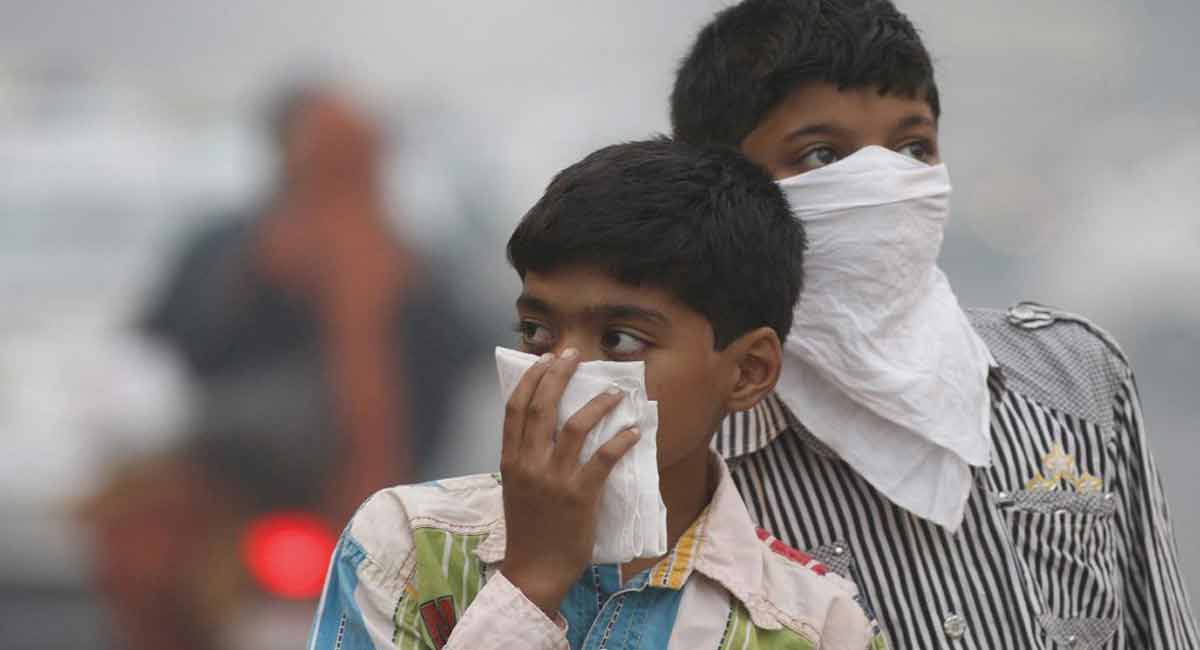World Air Quality Report 2021

Hyderabad: The 2021 World Air Quality Report was released recently. The report presented an overview of the state of global air quality in 2021. IQAir, a Swiss group that measures air quality levels based on the concentration of Particulate Matter (PM) 2.5. India was home to 14 of the world’s 20 most polluted cities, according to the report, which gathered data for 117 countries. Read more….
IQ Air endeavours to engage, educate, and inspire governments, researchers, Non-Government Organisations, companies, and citizens to work together to improve air quality and create healthier communities and cities.
Need for the Report
– Air pollution is now considered to be the world’s largest environmental health threat, accounting for seven million deaths around the world every year.
-Air pollution causes and aggravates many diseases, ranging from asthma to cancer, lung illnesses and heart disease.
– It is estimated that in 2021, the deaths of 40,000 children under the age of five were directly linked to PM2.5 air pollution.
How is PM 2.5 measured?
-The report is based on PM2.5 air quality data from 6,475 cities in 117 countries, regions and territories around the world.
– PM2.5, particulate matter consisting of fine aerosol particles measuring 2.5 microns or smaller in diameter, is one of six routinely measured criteria air pollutants and is commonly accepted as the most harmful to human health due to its prevalence in the environment and broad range of health effects.
– PM2.5 is generated from many sources and can vary in chemical composition and physical characteristics. Common chemical constituents of PM2.5 include sulphates, nitrates, black carbon, and ammonium.
– The most common human-made sources include internal combustion engines, power generation, industrial processes, agricultural processes, construction, and residential wood and coal burning.
– The most common natural sources for PM2.5 are dust storms, sandstorms, and wildfires.
Indian Scenario
-India’s annual average PM2.5 levels reached 58.1 µg/m³ in 2021, ending a three-year trend of improving air quality. India’s annual PM2.5 averages have now returned to pre-quarantine concentrations measured in 2019.
– India was home to 11 of the 15 most polluted cities in Central and South Asia in 2021.
-In 2021, Mumbai had recorded Particulate Matter (PM) 2.5 annual average of 46.4 microgram/cubic metre – nearly nine times above the World Health Organisation (WHO) limit.
Challenges or India
– Air pollution has a massive impact on human health in India.
– It is the second biggest risk factor for disease, and the economic cost of air pollution is estimated to exceed USD 150 billion dollars annually.
– Major sources of air pollution in India include vehicular emissions, power generation, industrial waste among others.
Initiatives taken
– System of Air Quality and Weather Forecasting and Research (SAFAR) Portal
– AQI has been developed for eight pollutants
– New Commission for Air Quality Management
2021 Capital City Ranking
Average annual PM2.5 concentration in the year
New Delhi, India 85.0
Dhaka, Bangladesh 78.1
N’Djamena, Chad 77.6
Dushanbe, Tajikistan- 59.5
Muscat, Oman 53.9
Kathmandu, Nepal 50.9
The top five polluted countries In 2021
– Pakistan
– Tajikistan
– India
– Bangladesh
– Chad
– Only 222 out of 6,475 global cities met updated PM2.5 parameters
– 93 cities had annual PM2.5 concentrations exceeding 10 times the WHO norms
– of 1,887 Asian cities, only four met updated PM2.5 norms
– 46 of 50 most polluted cities in the world are in Central and South Asia







